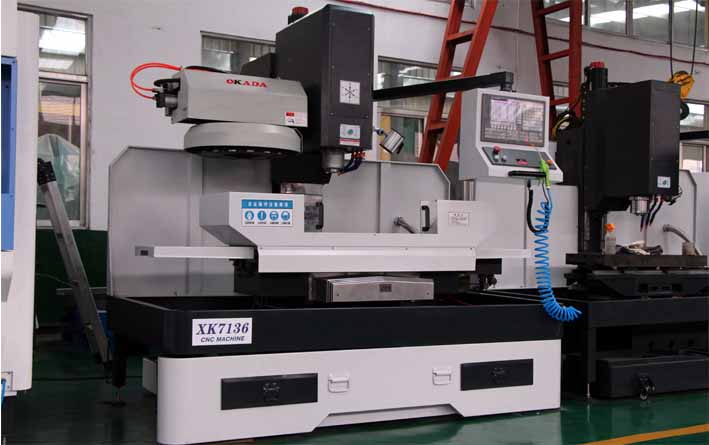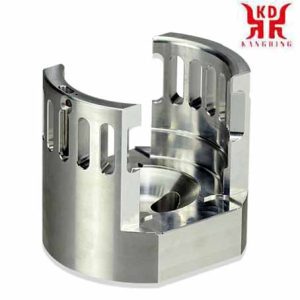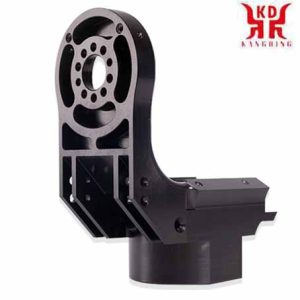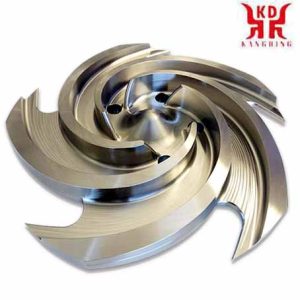FOR EVERY PURPOSE
Process aluminum, Stainless steel, titán, plastic and much more with the CNC portal milling machine. With our computer-controlled milling you can produce precisely, accurately and reliably. Whether for the workshop (hobby, model making, maker), the trade (CNC production, prototype construction, series production). with us you will find the right milling parts for your application.

CNC milling machine
Zavedenie počítačového numerického riadenia (CNC) has exponentially expanded applications of industrial machines by programmable automation of production and achieving impossible movements performed manually. ako sú kruhy, diagonal lines and other figures complicated that enable the manufacture of parts with highly complex profiles. This also translates into the optimization of many essential variables of any manufacturing process: productivity, precision, safety, speed, repeatability, flexibility and reduction of waste.
The multiplicity of milling machines that exist today has comfortably expanded into the proliferation of their CNC-equipped peers. v skutočnosti, there are also special kits to transform old milling machines into a CNC milling machine.
V podstate, the CNC milling machines are very similar to the conventional ones and have the same moving parts, to jest, the table, the cutting head, the spindle and the side and cross slide carriages. Avšak, they do not have levers or cranks to operate these moving parts, but rather a screen inserted in a panel full of controls and a metal box that houses the electrical and electronic components that regulate the operation of motors destined to carry out the same work that they did. the levers and cranks of the old machines. Among these components is the CNC, which is a computer mainly responsible for the movements of the milling machine through the corresponding software. The combination of electronics and drive motors or servo motors is capable of achieving all possible milling operations.

CNC Machining of Gantry Milling Machine
To understand the movement control exercised by the CNC, we are going to briefly review how a conventional milling machine works.
The figure schematizes a typical milling machine. In this type of machine, kľuky ručne ovládajú pohyblivé časti tak, aby rezný nástroj (fréza) sa pohybuje lineárne aspoň v troch osiach, ktoré sa nazývajú hlavné osi:
os X: horizontálne a rovnobežne s upínacím povrchom dielu. Je spojený s pohybom v pozdĺžnej horizontálnej rovine frézovacieho stola.
a os: tvorí priamy smerový trojsten s osami X a Z. Je spojený s pohybom v horizontálnej priečnej rovine frézovacieho stola.
os Z: kde je namontovaná fréza, je to ten, ktorý má reznú silu a dokáže zaujať rôzne polohy podľa možností hlavy. Je spojená s vertikálnym posunom hlavy stroja.
Ak má frézka pevný stôl, tieto tri pohyby vykonáva vreteno.
Avšak, it is clear that the milling of more complex parts will require a greater number of axes whose trajectory is not only linear, but also rotary. At this point is where the concept of CNC comes into play, giving rise to a multiplicity of complementary axes controlled independently and determined by the movement of rotary tables and / or adjustable heads. This gives rise to a variety of machine models that allow the machining of the part by different planes and approach angles.

CNC machining cavity of milling machine
In the following figure we see an example of a CNC milling machine with its basic components and main (X, Y, Z) and complementary (B, W) osi.
1 – Column
2 – Workpiece
3 – Milling table, with movement in the X and Y axes
4 – Strawberry
5 – Cutting head including spindle motor
6 – CNC control panel
7 – Coolant hoses
X, Y, Z – Main axes of displacement
B – Complementary axis of rotary displacement of the cutting head
W – Complementary axis of longitudinal displacement of the cutting head
The main function of the CNC is to control the movements of the table, the transverse and longitudinal carriages and / or the spindle along their respective axes by means of numerical data. Avšak, this is not all, because the control of these movements to achieve the desired final result requires the perfect adjustment and the correct synchronization between different devices and systems that are part of every CNC process. These include the main and complementary axes, the transmission system, the workpiece clamping systems and the tool changers, each of which presents its modalities and variables that must also be properly stipulated.
This rigorous control is carried out by software that is supplied with the milling machine and is based on one of the CNC numerical programming languages, such as ISO, HEIDENHAIN, Fagor, Fanuc, SINUMERIK and Siemens. This software contains numbers, letters and other symbols – napríklad, the G and M codes – that are encoded in an appropriate format to define an instruction program capable of carrying out a specific task. G codes are machine motion functions (rapid moves, feeds, radial feeds, pauses, cycles), while M codes are miscellaneous functions that are required for machining parts, but are not machine motion. (spindle start and stop, tool change, coolant, program stop, atď.). From this it follows that to operate and program this type of machine requires basic knowledge in machining operations on conventional equipment, elementary knowledge of mathematics, technical drawing and handling of measuring instruments.

Milling impeller processing of milling machine
Currently the use of CAD (computer-aided design) and CAM (počítačom podporovaná výroba) programs is an almost mandatory complement to any CNC machine, therefore. Vo všeobecnosti, the manufacture of a part involves the combination of three types of software:
CAD: makes the design of the part.
CAM: calculates the displacements of the axes for the machining of the part and adds the feed rates, rotation speeds and different cutting tools.
Control software (included with the machine): receives the instructions from the CAM and executes the orders to move the moving parts of the milling machine in accordance with these instructions.
The following video illustrates the manufacture of a part using CAD / CAM:
CNC milling machines are specially adapted for milling profiles, cavities, obrysy povrchu a operácie vysekávania, v ktorom musia byť súčasne ovládané dve alebo tri osi frézovacieho stola. Hoci, v závislosti od zložitosti stroja a vykonaného programovania, CNC frézky môžu pracovať automaticky, na výmenu fréz je zvyčajne potrebný operátor, ako aj na montáž a demontáž obrobkov.
Medzi odvetvia, ktoré bežne používajú CNC frézky, patrí automobilový priemysel (dizajn blokov motora, formy, a rôzne komponenty), kozmonautika (letecké turbíny), a elektroniky (formy a prototypovanie), ako aj výroba strojov, prístrojov a elektrických komponentov.
Let’s see in this video some types of CNC milling machines, as well as working examples.
 English
English العربية
العربية 中文(漢字)
中文(漢字) Čeština
Čeština Dansk
Dansk Nederlands
Nederlands Suomi
Suomi Français
Français Deutsch
Deutsch Italiano
Italiano 日本語
日本語 ಕನ್ನಡ
ಕನ್ನಡ 한국어
한국어 Português
Português Русский
Русский Slovenčina
Slovenčina Español
Español Svenska
Svenska Türkçe
Türkçe

